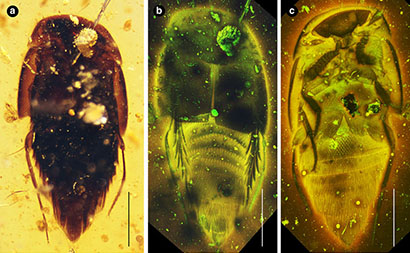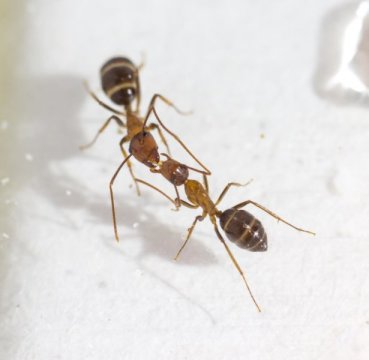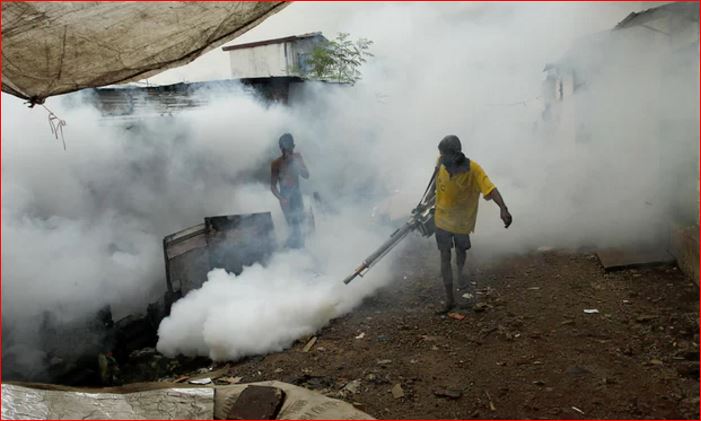When ancient insects first evolved eusocial behavior and began forming colonies, it didn’t take long, paleontologically speaking, for parasites of those resource-rich colonies to evolve, as well. A newly discovered ancient species of beetle found preserved in amber dates this apparent parasitic behavior to at least 98.8 million years ago.
In a paper published in Nature Communications this month, researchers from Kyushu University and Columbia University detail a new species of rove beetle, Mesosymbion compactus, found in a Burmese amber specimen housed at the American Museum of Natural History, that exhibits the hallmark traits of previously known parasitic beetles from the family Staphylinidae, subfamily Aleocharinae. These beetles have specialized to live inside the colonies of social insects such as ants or termites and often feed on eggs, larvae, and pupae in brood galleries.
As revealed through advanced imaging of the fossilized specimen, M. compactus, like modern aleocharines, has a teardrop-shaped body resembling a horseshoe crab, a head hidden below the pronotum when viewed from above, mandibles pointing rearward, and short, compact antennae. “Together, the suite of characters presented by Mesosymbion define an ecomorphology that has arisen numerous times in Aleocharinae, and suggests a non-integrated social parasite that was probably treated aggressively by its hosts, potentially targeting colonies as a brood predator,” the authors write. They also posit that M. compactus was a parasite of termites.
The M. compactus specimen comes from the very same amber deposit in Burma that provided the earliest known fossils of social termites, estimated to be 99 million years old. Previously, however, the earliest known social parasite was a rove beetle dated to approximately 52 million years ago (discovered by the same researchers), meaning M. compactus signifies a significantly earlier beginning to the evolution of parasitism of social insect colonies, placing it much closer to the rise of social insects themselves.
“Mesosymbion reveals that this adaptive versatility extends deep into the Mesozoic, when eusocial colonies presented novel niches for occupation that few other taxa were equivalently predisposed to fill. The notion of Mesozoic social parasitism by aleocharines implies that ant and termite societies were subject to exploitation during most of their evolution, including a long period when both social insect groups are inferred to have been rare and ecologically insignificant,” the authors write.
Source: Entomology Today







